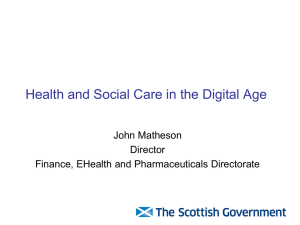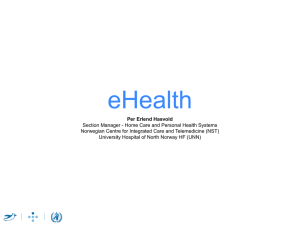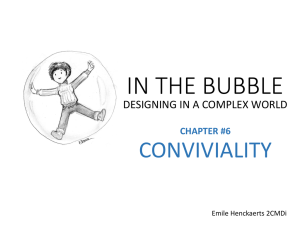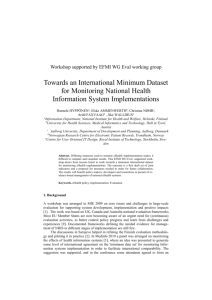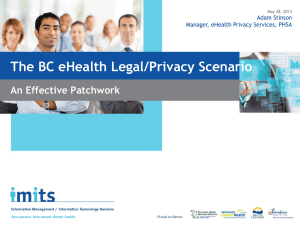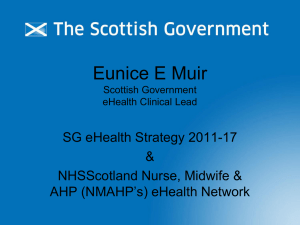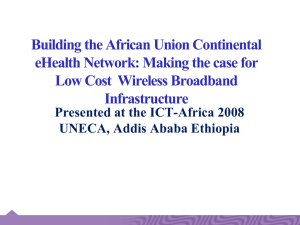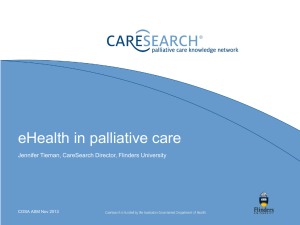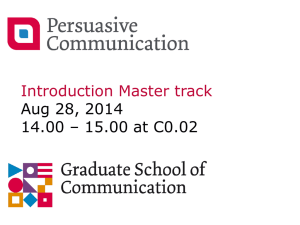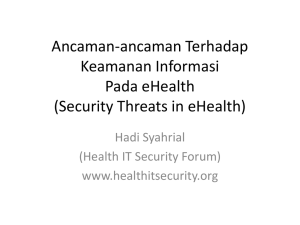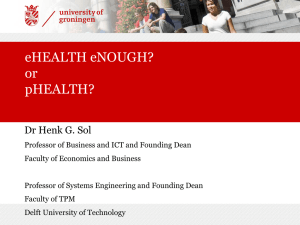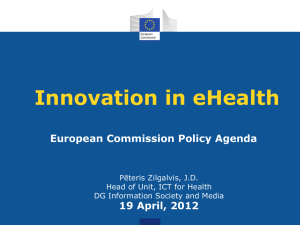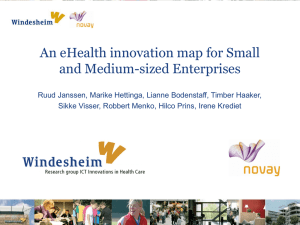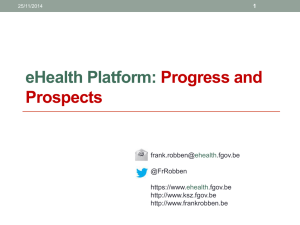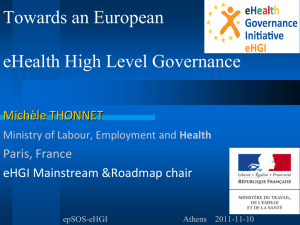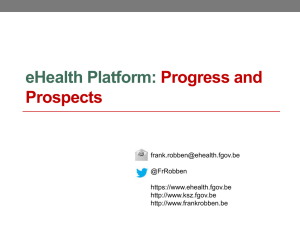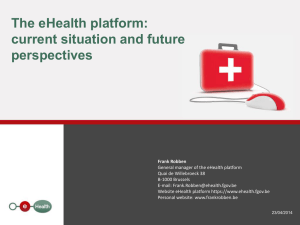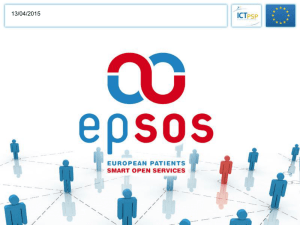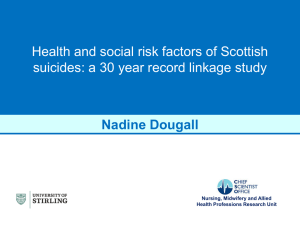persuasive designs
advertisement
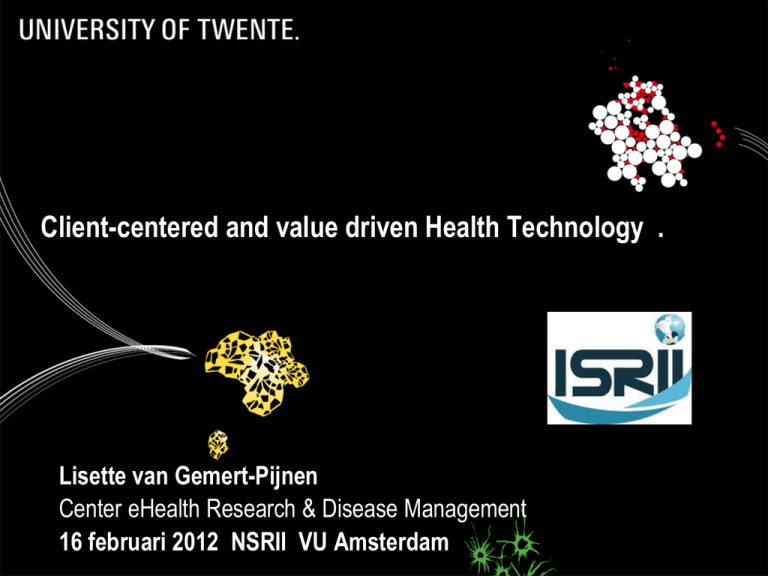
Client-centered and value driven Health Technology . Lisette van Gemert-Pijnen Center eHealth Research & Disease Management 16 februari 2012 NSRII VU Amsterdam Center for eHealth Research & Disease Management to intensify cooperation with international research centres and healthcare institutes to advice about (re)designing and implementing technology in healthcare to contribute to the solution of global health problems, like ageing and chronic care, via a multidisciplinary approach (social sciences & technology) HIGH TECH HUMAN TOUCH http://ehealthresearchcenter.org eHealth onderzoek in beeld eHealth, our approach…. “eHealth is not only a technical development, but also a state-of-mind, a way of thinking, an attitude, and a commitment for networked, global thinking, to improve healthcare locally, regionally, and worldwide by using information and communication technology.” (Eysenbach, 2001) eHealth a catalyst to innovate Healthcare Client-centered (persuasive designs) Value-driven (Business modelling) Self-Management & Safety support (what works for whom) Decision Support HCWs (to increase safety, to reduce errors) International network R & D eHealth Uptake: Who are the hard-core users? those that might feel they have much to gain…. eager to realize goals, quality-driven positive attitude in advance to use the application more healthy than they think they are persuasive designs that fit with client profiles client profiles ≠ disease-profiles big 5 personalities ≈ different persuasive designs Uptake: Persuasive Designs & Clientprofiles Reminders Multimedia Dialogue Support Social Support Impact: Client-centered & Blended care Integration offline & online: optimum? For whom? Match clientprofiles & treatment-design Effects on self-care, adherence, costsavings Business modelling (innovation/ ketenzorg) Implementation; Value-driven technologies Implementation no afterthought Stakeholder involvement during development Value-creation & Value-cost-matrix Drivers for deployment Business models (before deployment!) VALUE SPECIFICATION Purpose. Which stakeholders are important? What do stakeholders want? Who can offer it? Stakeholder salience mapping: which stakeholders are crucial in the project Value mapping: identifying added values by keystakeholders and ranking values (using e.g. critical decision systems) Business Modelling in eHealth 13/04/2015 13 What business model drives e(M) Health? Workshops stakeholders eMental Health & Gepast gebruik Hoe kan blended care ‘gepast gebruik’ bevorderen in de GGZ? Voor welk cliëntprofiel is eMental health gepast? Welk design van blended care is voor welke clientenprofiel “gepast” ? Welk business model past bij eMental health, in het bijzonder bij blended care? Casus depressie, eerstelijn/tweedelijn instellingen GGZ Focus Development & Implementation eHealth-roadmap eHealthwiki, Toolkit Needs assessments Critical decision system (value-matrix) Persuasive designs Business models Workshops & advice Supporting Health by Technology IV 22 mei Amersfoort, best practices implementation Contact: dr. J (Lisette) van Gemert-Pijnen J.vanGemert-Pijnen@utwente.nl www.ehealthresearchcenter.nl health by technology Education materials …New Book & Suppl ehealthwiki.org Students to learn how to develop and implement eHealthtechnologies Health professionals to know the keyfactors for eHealth quality Management to know the key-factors for implementation of eHealth Policy, governance to know how to measure the impact of eHealth Developers to know how to deal with a human centered development approach lessons learned Technology blows up shortcomings in current healthcare systems! Capacities of technology overlooked in eHealth research Implementation no issue in eHealth research Better adherence via persuasive designs Better implementation via stakeholders’ involvement /investment Staff, patients can manage IT; participation=motivation Persuasive technology and personalities (Halko&Kientz, 2010) More or less persuadable (Big Five Personalities) Conscientiousness successful for tech-persuasion (realising goals) Extraversions hard to persuade via tech Openness more likely to favour competitive or authoritative tech Agreeableness not very successful to persuade via tech Neuroticism no cooperation, enjoyment of negative reinforcement Personalizing: Which design fits with specific user groups Data base with 190-studies •Chronic condition •Lifestyle •Mental health •Data extraction based on CeHRes roadmap • Predictors of usage (patient-drivers) • Predictors of implementation (stakeholder-drivers) •Results comparable (and interpretable to other studies) Persuasive System Design Model (PSD) Primaire taak Reductie Tunneling op maat maken persoonlijk maken zelf monitoren, Simulatie oefening Dialoog ondersteuning Prijzen Beloningen Geheugensteun Suggesties Gelijkvormigheid Voorkeuren sociale rol Systeem geloofwaardigheid Sociale ondersteuning vertrouwenswaardig Expertise oppervlakkige geloofwaardigheid “real world feel” Autoriteit derde partij instemming verifceerbaarheid sociaal leren sociale vergelijking normatieve invloed sociale facilitatie Samenwerking Competitie herkenning Triggers and incentives “You can take measurements from your glucometer and the app will automatically know you’ve taken the measurement and it will log that,” said Cafazzo UHN. “It will prompt you when it detects trends in your blood sugar that are problematic.” “It gets the adolescent to start thinking about what’s happening and encourages positive behaviours by asking them to take measurements…if they have a lot of consecutive readings as they should, they will get a reward.” The rewards, iTunes redemption codes, allow teens to buy other apps or music that appeal to them. Presentatietitel: aanpassen via Beeld, Koptekst en voettekst 13-4-2015 24 Wall-meetings eMental Health wachttijden verkorten, effectiever maken (voor behandeling plaats vindt al online intake, oefeningen) tijdsbesparing, betaalbaarheid van zorg extra service; klanttevredenheid Training online communicatie met cliënten Training/overleg inpassing in reguliere werkzaamheden Training omgaan met techniek Discontinued users (web-based systems ) Technology frustrates Usability problems; people get lost in the system They have a high demand for push factors Triggers; feedback; incentives No obligations, free use, free choice, free of charge: low adherence Technology does not motivate no fit into daily live they think their condition is under control (ceiling effect) Cooperation • • • • • • • • • • • • Cooperation with University of Waterloo, NIHI Cooperation with the University of Toronto (Dr G Eysenbach, visiting professor) Cooperation with the University of Munster (Eursafety Healthnet) Board e-Telemed (IARIA/ ETELEMED ), scientific committee /fellow; editorial board (since 2008) Board Eursafety-Health-net ( 2009) , Board MRSA-net (20052009) European Center for Disease Prevention & Control (ePublic Health). Cooperation with knowledge centers eHealth; MedicInfo, Mediarts/NVU, FocusCura, Philips Medical Systems, UMC Radboud, UMCU, TNO quality of life. Formal cooperation with RIVM, ePublic Health Contacts with WHO, international Center eHealth Australia, Center for global eHealth Innovation (Toronto), Norwegian telemedicine center, Tromsø , California Healthcare Foundation Cooperation with RAND-Europe eHealth business modelling. Coordination of Annual conference “Supporting Health by Technology “(mei 2008, 2009. November 2010 Medicine 2.0 (Uni Toronto) with Supporting Health by Technology III (GW/UT). Organisation of Congress business modelling eHealth; eTelemed (St Maarten 2010, Guadeloupe 2011) .
